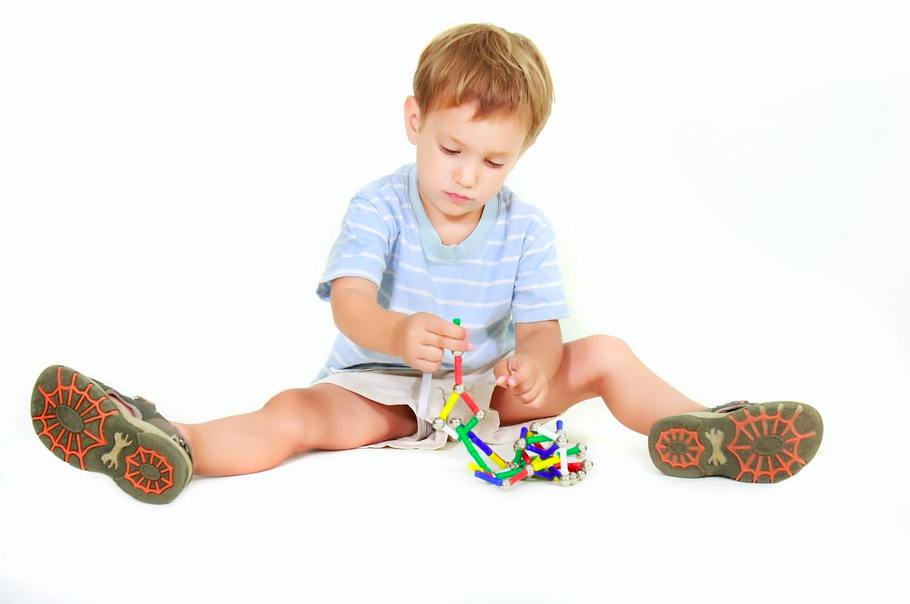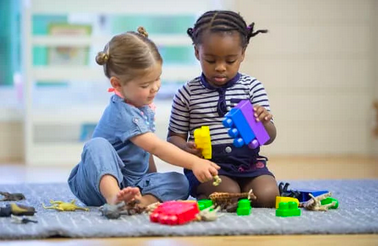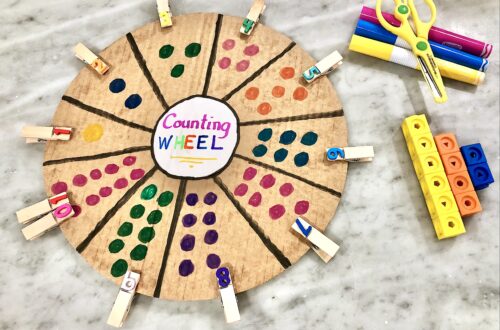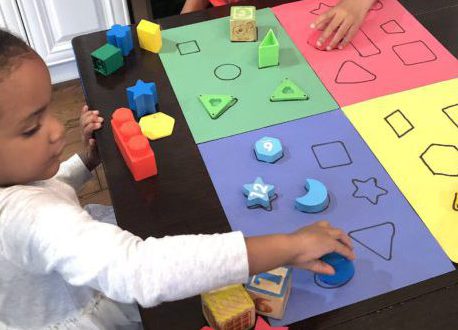
Create Routines That Promote Learning & Development In Toddlers
Let’s talk about one of the main areas of worry and concern that I hear from parents; learning and development in toddlers.
The early years of a child’s life are crucial for setting a foundation for lifelong learning and development. As toddlers grow, they experience rapid physical, cognitive, and emotional changes.
During this time, parents and caregivers have a unique opportunity to shape these developmental milestones positively. By establishing a structured yet flexible routine, adults can create an environment that nurtures a toddler’s growth and instills a love for learning.
This post discusses creating a routine that promotes learning and development in toddlers. Read on to learn more.
What Are Structured Routines In Early Development?
Structured routines in early development refer to the consistent and predictable schedules that are established for young children, particularly toddlers.
Before I go on I want to note that there is a difference between predictable schedules and rigid schedules.
These routines are critical in shaping a child’s early experiences, influencing their physical, cognitive, emotional, and social development. Establishing structured routines is about crafting an environment that supports the holistic growth of a child.
Moreover, structured routines are characterized by regularity and predictability. They involve establishing specific times for activities such as meals, play, learning, and sleep.
The key aspect of these routines is consistency, which provides a sense of security and stability for young children.

Components Of A Structured Routine
Structured routines are integral in guiding young children through their developmental stages. They can provide a framework that helps establish security, discipline, and a conducive learning environment.
By breaking down the day into manageable segments, these routines foster essential life skills and promote physical, cognitive, emotional, and social development. The key components include:
1. Educational Activities
Allocating specific times for educational activities is crucial to foster a child’s cognitive development. This routine segment may include structured play, reading sessions, or engaging in educational programs. These activities can stimulate the brain by encouraging curiosity and learning.
For example, during play, children can explore concepts like cause and effect, or practice counting and recognizing shapes. Reading enhances language skills and imagination.
Such activities can help improve cognitive skills and prepare toddlers for more structured educational settings, like preschool programs.
2. Morning Routines
Morning routines are the cornerstone of a child’s day, setting the tone for what’s to come. A typical morning routine might include hygiene practices like brushing teeth and bathing, followed by getting dressed and eating breakfast.
This sequence teaches children the importance of personal care and prepares them physically and mentally for the day.
Consistency in the morning routine instills a sense of responsibility and independence. For instance, encouraging children to dress themselves or help prepare breakfast can develop motor skills and a sense of accomplishment, laying a foundation for self-reliance.
3. Playtime
Playtime, both indoors and outdoors, is vital for a child’s physical and social development. It’s through play that children learn to interact with their environment and each other. Outdoor play encourages physical activities like running, jumping, and climbing, which are crucial for developing gross motor skills and overall physical health.
Indoor play, however, often involves puzzles, building blocks, and arts and crafts, which are excellent for honing fine motor skills and encouraging creativity.
Socially, playtime offers opportunities for children to learn about sharing, cooperation, and problem-solving, which are foundational skills for their future social interactions.

4. Meal Times
Regular mealtimes ensure a balanced diet and are pivotal for family bonding and social interaction. During meals, children learn about different foods, table manners, and the importance of nutrition. This is also a time for families to come together, share their daily experiences, and strengthen their bond.
Additionally, conversations during meals can help develop a child’s communication skills and understanding of social cues. Being involved in meal preparation or table setting can foster a sense of contribution and belonging within the family unit for young children.
5. Nap And Bedtime Routines
Nap and bedtime routines are critical for a child’s health and well-being. Adequate sleep is essential for physical growth, brain development, and emotional regulation. A consistent bedtime routine might include activities like a warm bath, reading a bedtime story, and dimming the lights, all of which signal to the child that it’s time to wind down.
This routine can help establish healthy sleep patterns and ensure that children get the rest they need to be alert and active for the next day.
Furthermore, bedtime routines can provide a quiet, comforting time for children to relax and bond with their caregivers.

Benefits Of Structured Routines In Early Childhood
Creating a structured routine in early childhood has several advantages. These may include:
1. Sense Of Security And Belonging
Predictable routines offer toddlers a comforting sense of security and belonging. When children know what to expect each day, it reduces anxiety and confusion, making them feel more grounded and safe. This predictability is especially important in early childhood, a time of significant change and development.
2. Development Of Time Awareness And Discipline
Structured routines can help young children gain an understanding of time and sequence. This early grasp of time management and the discipline that comes with it is invaluable as children grow.
Regular routines instill a sense of order and responsibility, teaching children the importance of punctuality and preparing them for the more structured demands of school life.
3. Enhanced Learning And Cognitive Development
Incorporating educational activities into daily routines can significantly enhance cognitive development. Activities such as reading, puzzle-solving, and engaging in interactive games are crucial for developing critical thinking and problem-solving skills.
These activities stimulate the brain, fostering an environment where learning is natural and continuous.
4. Promotion Of Healthy Habits
Consistent routines around meal times, physical activities, and sleep are instrumental in promoting healthy living habits. Establishing these patterns early on in life can have a profound and lasting impact on a child’s physical and mental health.
Regular meals and physical activities ensure proper growth and development, while a consistent sleep routine is essential for rest and rejuvenation.
5. Emotional And Social Stability
Regular interaction with family members and peers within the framework of a structured routine supports emotional and social development. These interactions allow children to express themselves, understand and manage their emotions, and develop empathy.
Social skills such as sharing, cooperation, and understanding social cues are cultivated during these interactions, laying the foundation for healthy emotional and social relationships in the future.

6. How To Implement Structured Routines
Implementing structured routines in the early years of a child’s life is a delicate balance of consistency, flexibility, and attentiveness to individual needs. These routines are essential for creating a stable, nurturing environment that promotes development. However, the effectiveness of a structured routine depends largely on how it’s implemented.
Here’s how to implement structured routines in toddlers:
a. Be Consistent
Consistency is the cornerstone of effective structured routines. It can provide a sense of predictability and security for toddlers, helping them understand and anticipate what comes next in their day.
By maintaining consistent times for meals, sleep, play, and educational activities parents and caregivers can establish a reliable framework within which children can explore and learn. This regularity in daily activities is essential for creating a stable environment that nurtures a child’s development.
b. Be Flexible
While maintaining consistency, it’s equally important to stay flexible. Children’s needs and circumstances can change rapidly, and the ability to adapt routines in response to these changes is crucial.
Flexibility might mean adjusting nap times, altering activities based on the child’s mood or interests, or accommodating unexpected events. This adaptability ensures that the routine serves the best interests of the child, providing structure without rigidity.
c. Involve Parent And Caregiver
The active involvement of parents and caregivers in daily routines is fundamental. Their engagement provides children with a sense of love and security.
Whether it’s participating in play, helping with meals, or reading a bedtime story, this involvement can strengthen the emotional bond between the child and caregiver, enhancing the child’s sense of belonging and comfort.
d. Observe And Adjust
Observation is key to tailoring routines to a child’s evolving needs. Caregivers should regularly assess how the child is responding to the routine and be ready to make adjustments.
This might involve changing activities that no longer interest the child, extending or reducing time for certain tasks, or introducing new elements to the routine. Regular observation and adjustment ensure that the routine remains relevant and engaging.
e. Adapt Routines To Individual Needs
Every child is unique, and what works for one may not work for another. Recognizing and respecting individual differences is crucial in implementing structured routines. This might involve different bedtimes for children with differing sleep needs, varying types of play to suit different interests, or adapting learning activities to the child’s developmental pace.
Customizing routines to fit individual needs ensures that each child receives the most beneficial and supportive experience possible.
Final Thoughts
Establishing a routine that promotes learning and development in toddlers is an integral part of early childhood care. Such routines lay the foundation for a lifelong love of learning and provide children with the tools they need to navigate their world.
By applying the above information, caregivers can create an environment that nurtures all aspects of a toddler’s development. Ultimately, the goal is to foster an environment where toddlers feel secure, loved, and stimulated, setting them on a path to becoming curious, confident, and well-rounded individuals.
Welcome to my blog! I am an activity mom of three and I have over 15 years of experience crafting, writing, designing and creating. My mission is to bring fun, balance and learning to your busy homes with activities, tips, inspiration, and organization!






